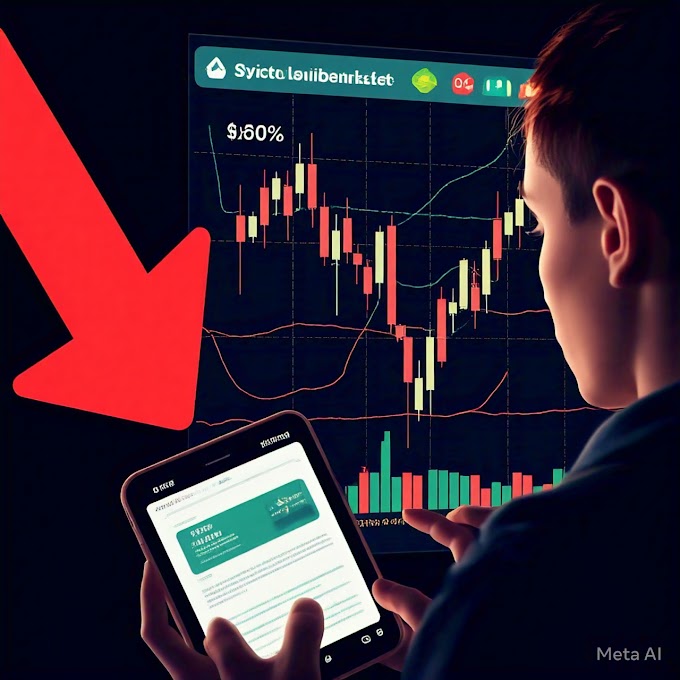Introduction
Welcome to an exciting era in the world of cryptocurrency and decentralized finance (DeFi). Tokenized real-world assets (RWAs) are projected to become a $16 trillion market by 2030, potentially reshaping the financial landscape as we know it. At the forefront of this revolution are partnerships like Navi Protocol and Ando Finance on the S Blockchain, creating groundbreaking opportunities for both institutions and individual investors.
In this article, we will explore the rise of tokenized RWAs, the role of platforms like Navi and Ando, and why this is a trend you should not ignore.
Table of Contents
- Introduction to Tokenized Real-World Assets
- The Potential Impact of a $16 Trillion Market
- Key Players: BlackRock, Ando Finance, and Navi Protocol
- How Tokenized RWAs Work
- The Role of the S Blockchain
- Benefits for Investors
- The Future of DeFi and Traditional Finance Integration
- FAQs
- Conclusion
1. Introduction to Tokenized Real-World Assets
Tokenized real-world assets represent physical or financial assets converted into digital tokens on a blockchain. These tokens can represent anything from real estate and bonds to private equity and commodities. By tokenizing these assets, they become tradable, secure, and accessible on blockchain platforms.
This is not just a futuristic idea—it’s happening now. With industry giants like BlackRock entering the space through Ando Finance, the transition is well underway.
2. The Potential Impact of a $16 Trillion Market
The Boston Consulting Group predicts that tokenized RWAs could grow into a $16 trillion sector by 2030. To put this into perspective, this figure surpasses the current market cap of all cryptocurrencies combined fivefold.
This monumental shift could unlock a significant portion of global liquidity, revolutionizing how assets are managed, traded, and valued in both traditional and decentralized finance systems.
3. Key Players: BlackRock, Ando Finance, and Navi Protocol
- BlackRock: As the world’s largest asset manager, BlackRock’s involvement signals mainstream adoption of tokenized RWAs.
- Ando Finance: Specializes in tokenizing real-world assets, creating opportunities for stable and reliable yields.
- Navi Protocol: A leading DeFi platform on the S Blockchain, Navi is known for its innovative yield-generating solutions.
The partnership between Navi Protocol and Ando Finance exemplifies how blockchain can democratize access to high-yield investment opportunities.
4. How Tokenized RWAs Work
Traditional assets like real estate or treasury bonds are digitized and represented as tokens on a blockchain. These tokens maintain the value and characteristics of their underlying assets while benefiting from blockchain’s transparency, efficiency, and accessibility.
For instance, Ando Finance’s USDY is a yield-earning stablecoin backed by real-world assets, allowing investors to earn stable returns while leveraging blockchain technology.
5. The Role of the S Blockchain
The S Blockchain is emerging as a leading platform for tokenized RWAs due to its:
- Speed and Scalability: Ensuring smooth transactions even as adoption grows.
- Developer-Friendly Environment: Facilitating innovative DeFi solutions like those offered by Navi Protocol.
- Community Support: A vibrant ecosystem driving growth and adoption.
Navi’s integration with Ando Finance is positioning the S Blockchain as a hub for RWA tokenization.
6. Benefits for Investors
- Stable Yields: Backed by real-world assets like U.S. Treasuries, offering security and reliability.
- Accessibility: Platforms like Navi make it easy for anyone to participate, regardless of experience level.
- Massive Upside Potential: Early adopters stand to gain as RWAs capture more global liquidity.
This integration bridges the gap between traditional finance and blockchain, creating new opportunities for portfolio diversification and wealth growth.
7. The Future of DeFi and Traditional Finance Integration
The partnership between Navi and Ando demonstrates how DeFi is evolving from focusing solely on digital assets to integrating traditional financial instruments. This shift provides everyday investors access to high-quality investment options once reserved for institutions.
As traditional finance continues to inflate the money supply, tokenized RWAs offer a transparent and efficient alternative for managing wealth.
8. FAQs
Q1: What are tokenized real-world assets?
Tokenized RWAs are digital tokens representing physical or financial assets on a blockchain, such as real estate or bonds.
Q2: Why are RWAs important for DeFi?
They enable DeFi platforms to offer stable and reliable yields backed by tangible assets, attracting more mainstream adoption.
Q3: What makes the S Blockchain unique?
Its scalability, developer-friendly environment, and active community make it an ideal platform for DeFi innovations.
Q4: How can I benefit from the Navi-Ando partnership?
You can explore Navi’s USDY liquidity pool to earn stable yields backed by real-world assets.
Q5: Is investing in tokenized RWAs risky?
While all investments carry some risk, tokenized RWAs backed by tangible assets are generally considered more stable than many other crypto investments.
9. Conclusion
The tokenization of real-world assets is not just a trend—it’s a transformative movement poised to redefine the financial landscape. Platforms like Navi Protocol and Ando Finance are leading the charge, creating unprecedented opportunities for investors.
By bridging traditional finance and blockchain, tokenized RWAs are democratizing access to stable, reliable yields while unlocking massive potential for growth. For those looking to stay ahead in the crypto space, this is a development you can’t afford to ignore.








